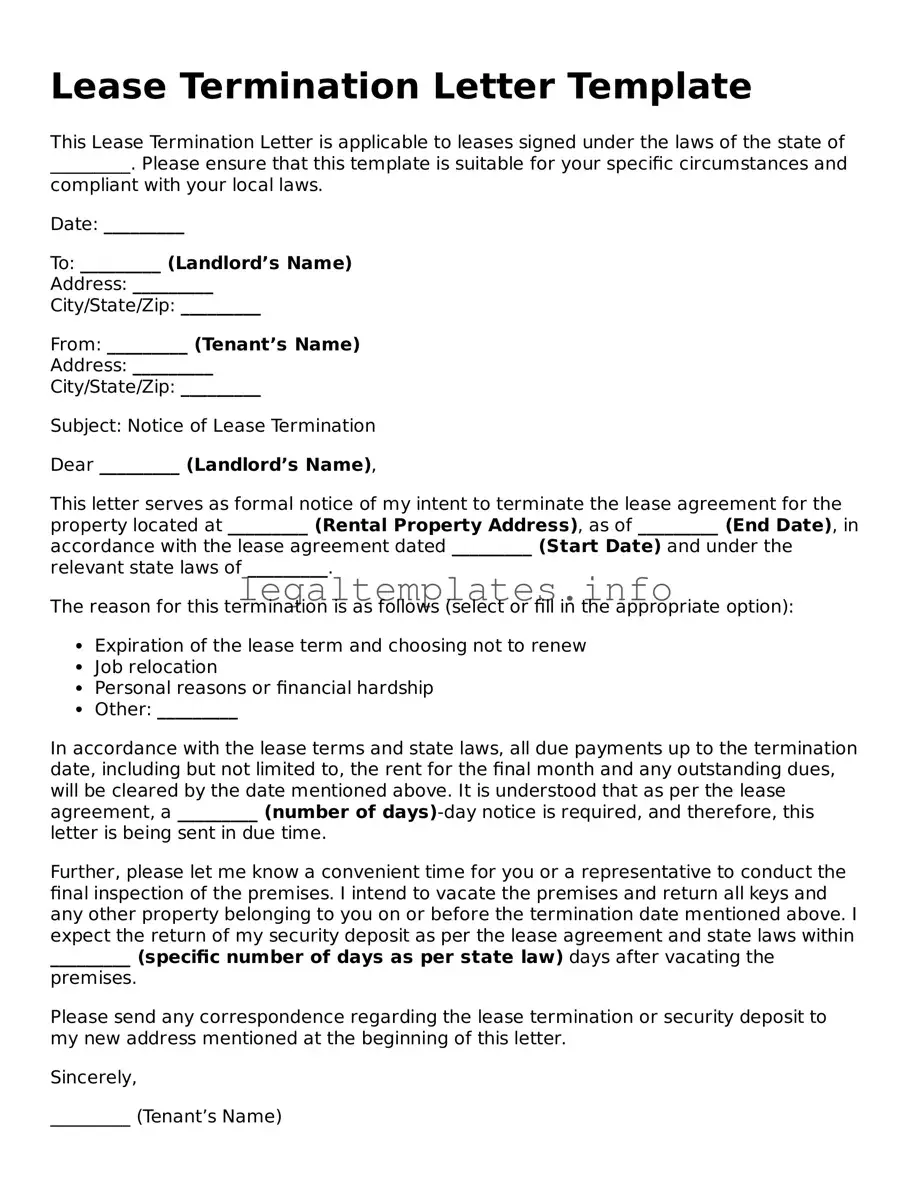What is a Lease Termination Letter?
A Lease Termination Letter is a document used by a tenant or landlord to notify the other party of their intent to end the lease agreement before the original lease term expires. This letter serves as a formal notice to terminate the lease, outlining any reasons for termination and the desired move-out date in accordance with the lease agreement or state laws.
When should a Lease Termination Letter be used?
A Lease Termination Letter should be used any time either a landlord or tenant wishes to end a rental agreement early. Circumstances may include the tenant’s decision to move due to personal reasons, the landlord’s decision to sell the property, or other situations as allowed by the lease or law. It's crucial to check the lease document and local laws to ensure proper grounds and timing for termination.
What information needs to be included in a Lease Termination Letter?
The letter should include the date of the letter, the intended move-out date, a reference to the lease agreement (including the start date), reasons for termination (if any), and any requirements or conditions for ending the lease. Additionally, details regarding the return of the security deposit and the property inspection should be mentioned, conforming to state laws and lease agreement stipulations.
Is it necessary for a Lease Termination Letter to be notarized?
Typically, a Lease Termination Letter does not need to be notarized. However, having the letter notarized can add a layer of verification and formality to the document, ensuring that the signatures are genuine. It's advisable to review local laws and lease agreements for any specific requirements.
How much notice is required to terminate a lease early?
The required notice period for early lease termination varies by state law and the terms of the lease agreement. Commonly, a 30-day notice is required, but some agreements or laws may require 60 days or more. It's essential to review the lease agreement and consult state laws to determine the appropriate notice period.
Can a tenant terminate a lease early for any reason?
Tenants may be able to terminate their lease early under certain conditions, such as military service obligations, violations of lease terms by the landlord, or if the rental unit becomes uninhabitable. However, without a legal justification, tenants may face financial penalties for breaking the lease. Reviewing the lease agreement and understanding state law is crucial to evaluating one's options.
What happens if a Lease Termination Letter is sent late?
If a Lease Termination Letter is sent late, meaning it doesn’t meet the required notice period, the tenant might be responsible for rent payments until the lease's original end date or until a new tenant occupies the property, depending on the lease agreement and state laws. It underscores the importance of planning and sending the notice within the timeframe specified by the lease and law.
Should both the tenant and landlord keep a copy of the Lease Termination Letter?
Yes, both parties should keep a copy of the Lease Termination Letter. This document serves as proof that notice was provided to end the lease agreement. Keeping a copy can help resolve any future disputes or misunderstandings regarding the termination of the lease.
Can a Lease Termination Letter be delivered electronically?
Whether a Lease Termination Letter can be delivered electronically depends on the lease agreement's terms and state laws. Some jurisdictions accept electronic delivery as legitimate, provided it meets specific criteria like email confirmation or electronic signatures. It's advisable to confirm the acceptable methods of delivery stated in the lease agreement or consult legal guidance to ensure compliance.
What recourse does a party have if the other party refuses to accept a Lease Termination Letter?
If one party refuses to accept a Lease Termination Letter, the refusing party's actions might not stop the lease from being terminated if the termination is legally justified and the notice was properly given according to lease terms and state laws. In such cases, it may be necessary to seek legal advice to understand the available remedies or to enforce the termination through the courts.
